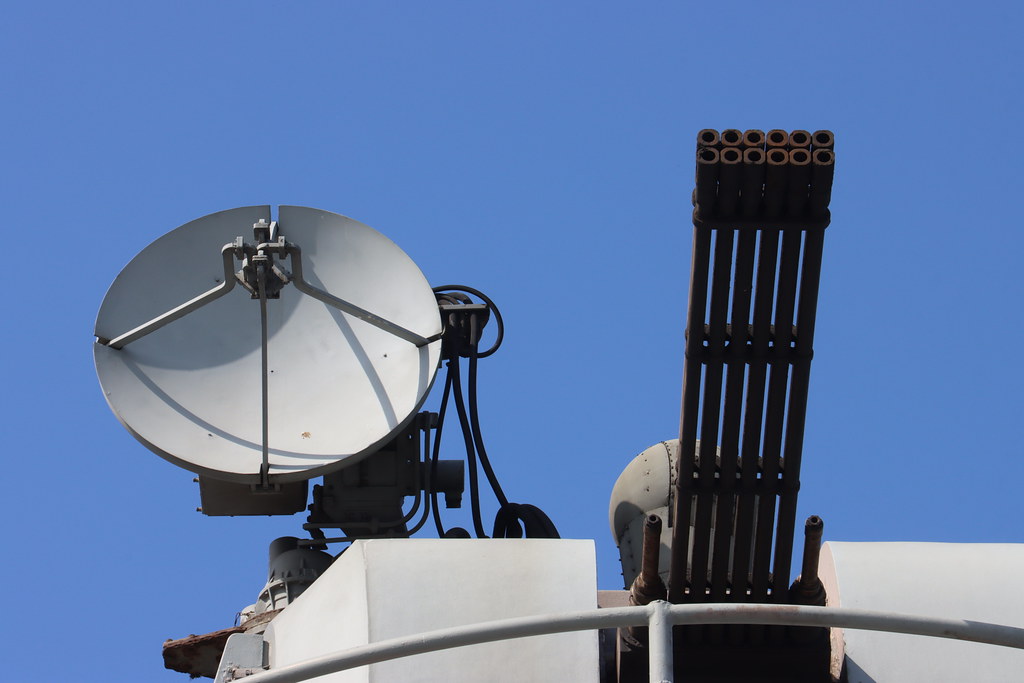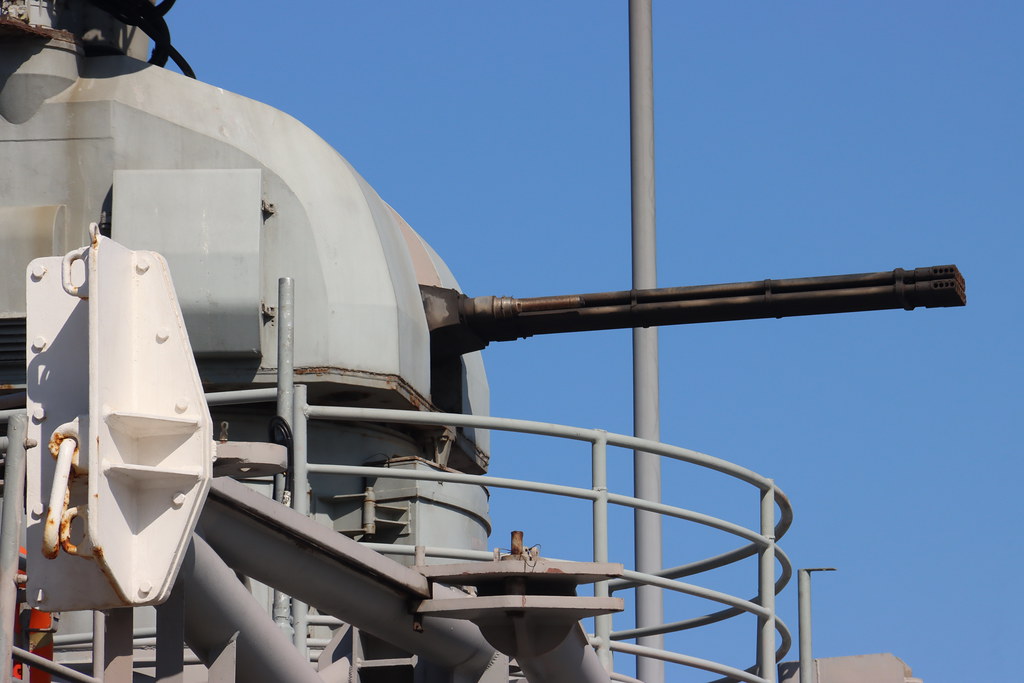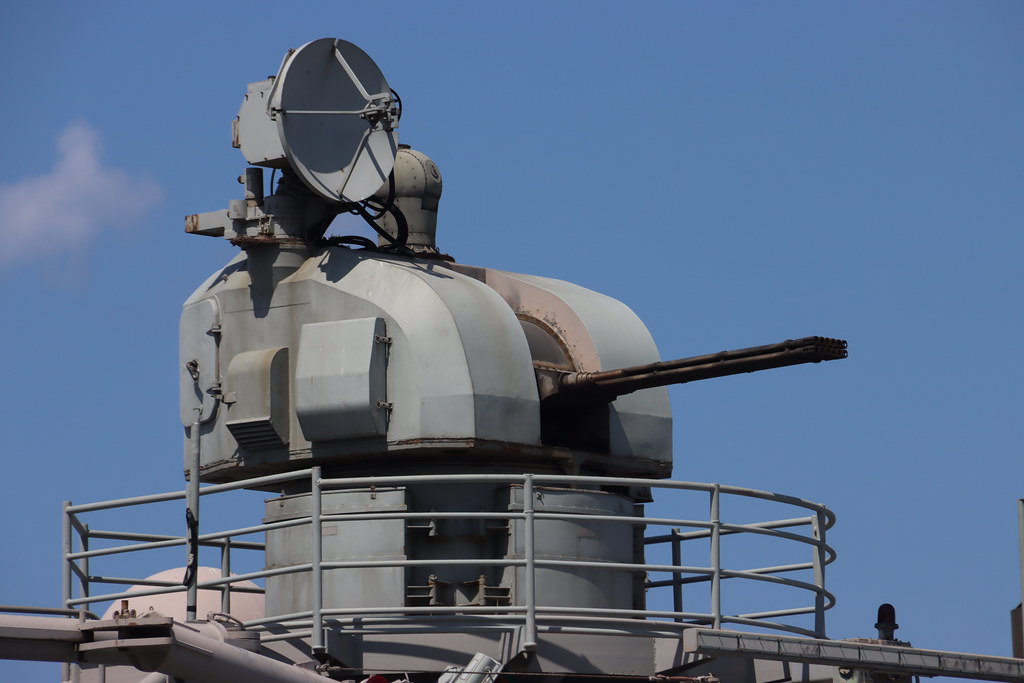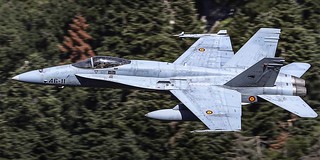The Spanish-German naval missile defense system CIWS Meroka in pictures
Last weekend, the frigate "Santa María" F-81 and the amphibious assault ship "Galicia" L-51 visited the port of Vigo.
I had the opportunity to take hundreds of photos of both ships, which I will publish little by little. I want to start today with the Spanish-German naval defense system against CIWS Meroka missiles that is still carried by the frigate "Santa María", which I was able to photograph in great detail from different angles.

Like the other five frigates of the "Santa María" class, the F-81 carries this system mounted on the aircraft hangar, facing the stern of the ship. Here we see it in a photo taken from the flight deck of the L-51.

Like the other five frigates of the "Santa María" class, the F-81 carries this system mounted on the aircraft hangar, facing the stern of the ship. Here we see it in a photo taken from the flight deck of the L-51.

Its development was not easy due to the complexity of the mechanism. After the idea had been put aside for a few years, at the beginning of the 1970s the Spanish Navy became interested in this system, formally ordering 20 assemblies in 1975.

The first on-board tests were carried out on the Lazaga-class patrol boat Cadarso P-03 in 1984. The delay indicates how complex the implementation of this system was, made up of 12 20mm cannons arranged in two rows of 6 barrels each, which were fired individually in a sequence of salvoes that reached a larger impact area, ideal for an anti-missile weapon.

Fire control is done by radar. The system has used different types, the definitive being the Lockheed Electronics VPS-2 Sharpshooter, capable of acquiring targets at 5,000 meters. The radar is mounted on the right side of the tower.

The cannons are fed with a hopper with 720 projectiles. The total weight of the system exceeds 6 tons. The Meroka's rate of fire was two salvoes per second, firing a total of 1,440 rounds per minute.

Of the 20 systems ordered by the Spanish Navy, four were installed on the now-defunct "Príncipe de Asturias" R-11 aircraft carrier, 10 on the old Baleares-class frigates and 6 on the frigates still in operation of the "Santa Maria" class. The latter are the only ships that continue to carry the Meroka, as the system was not exported to any other country.

Today, the Meroka has become an obsolete weapon , since its radar is not capable of acquiring supersonic missiles and its guns have little chance of shooting down the most modern anti-ship missiles.

Under these lines we can see how the Meroka system of the F-81 is mounted , on a tower with a catwalk.

In this other image we can see on the left the exit of the cartridges after the shots, which were thrown on the upper deck of the ship.

Today, due to the shortcomings of the Meroka, the anti-missile defense of the "Santa María" class frigates depends on the RIM-66E surface-to-air missiles, which are fired from the launcher located in the bow of the ship.

I end these lines with two awesome photos published by the Spanish Navy showing the Meroka of the frigate "Numancia" F-83 opening fire during an exercise.

|
Don't miss the news and content that interest you. Receive the free daily newsletter in your email: |
- Most read
- Spain will modernize its fleet of firefighting seaplanes and buy seven new DHC-515s
- United States' last Hueys: Vietnam-era veterans still flying in the US Air Force
- Sierra Army Depot, a huge United States base with hundreds of Abrams tanks stored
- Eurofighter vs F-35: the opinions of professional pilots on these advanced fighters
- A former secret submarine base in Estonia and its important role in the Cold War
- The firearms used by the Pontifical Swiss Guard, the smallest army in the world
- A spectacular video of an Alpha Scramble with Eurofighter aircraft from Spain and Germany

 ES
ES







Opina sobre esta entrada: